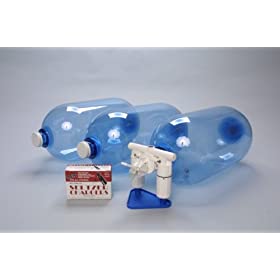I'm trying to force carbonate a 2L bottle of Rye Pale Ale but all I have is a CO2 gun that uses BB gun cylinders, food-grade gas of course. I want to have this bottle ready by Sunday, so I've already pressurized the contents and shook vigorously tonight, letting it chill until morning.
Tomorrow morning I plan to shoot some more CO2, but I'm concerned about over-pressurizing the bottle to the point of detonation.
Tomorrow morning I plan to shoot some more CO2, but I'm concerned about over-pressurizing the bottle to the point of detonation.




